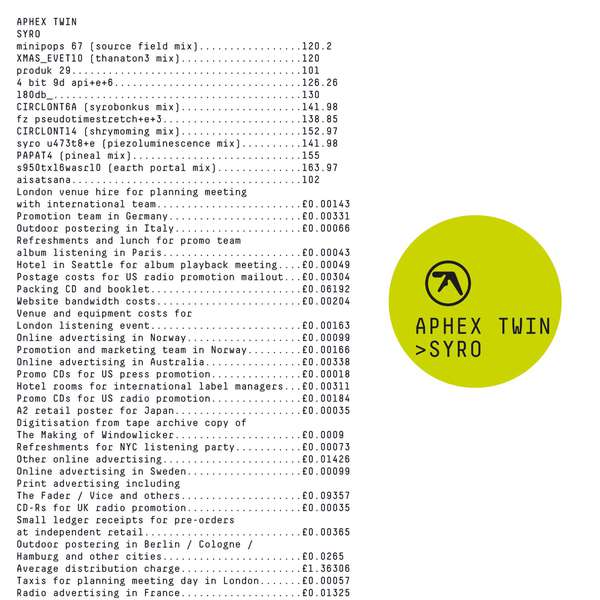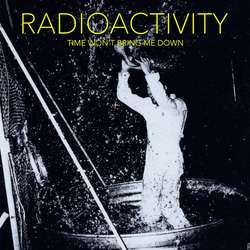Sometime around the mid-2000’s, I began to realize just how much I missed having new music by Richard D. James, who typically records under the name of Aphex Twin. I’d been spoiled in the 1990’s: starting off the decade with a pair of outstanding and other-wordly ambient releases (the positively sublime Selected Ambient Works discs), James continued to regularly produce albums of tweaked out, frequently manic glitch electronica that somehow was quite listenable and enjoyable despite its many quirks. Later singles “Come to Daddy” and “Windowlicker” positioned James on the verge of mainstream accessibility, yet following 2001’s very obtuse Drukqs, James and the Aphex Twin moniker virtually disappeared, leaving a huge void in the world of electronic music.
I think I was as shocked as anyone else when James emerged from his hiatus in 2014 and released Syro, the first Aphex Twin studio album in more than a decade. Upon listening to the album, it’d be easy to declare that it marks a return to form for James but honestly, the man never lost his form, he just retreated into obscurity for awhile. What I’d be more inclined to declare is that, while tracks like “Windowlicker” suggested that James might be aiming to take the music industry over by force and Drukqs was too experimental for many people’s taste, Syro finds James going back to his roots in genuinely odd electronica. The album is very nearly as playful as albums like 1995’s I Care Because You Do, and speaks to the fact that James may have evened himself out over the years. Earlier Aphex Twin albums were a mixture of supremely pleasant tracks and ones that were plain difficult to listen to due to their extremely harsh and abrasive sounds, but Syro largely maintains a consistently agreeable tone throughout even though it is incredibly eclectic.
One thing that hasn’t changed with the 2014 album is James’ tendency to title songs with very convoluted, borderline irrelevant names that frequently reference the gear and/or software used to create them. This seems almost a ploy to make this album more bizarre and maybe a bit unapproachable since it’s almost pointless then to concentrate on the names at all: what can a title like “4 bit 9d api+e+6 [126.26]” really tell one about how a particular track sounds? Regardless, much of the album includes the same ingredients that were heard on all the classic Aphex Twin pieces; the opening track for instance is a bouncy number featuring manipulated vocals and warm melodic elements along with gurgles, whizzes, zaps, and zings. From here, the album alternates between similarly relaxed pieces (“EMAS EVET10”) and ones that are somewhat more cold and mechanical (“Produk 29”).
Fifth track “180db” is probably as quirky a track as is featured here, with blurted, discordant melodies trumpeting over a heavy techno rhythm. Afterward, the very busy and loud “CIRCLONT6A” works through several distinct motifs, with a framework of scratchy rhythms and hollow background tones holding the piece together, while “CIRCLONT14” (presumably made with the same software), is more spacey in its use of moody keyboard yet still propels forward on the back of a manic rhythm. Despite the fact that it’s full of very modern sounds, ninth track “syro u472t8+e” imagines what might have happened had James been around making music in the 1980s and “PAPAT4” is a upbeat and breakneck-paced track featuring the album’s most downright cheerful melody. Penultimate “S950tx16wasr10” reaffirms that James hasn’t forgotten his trademark snare rush percussion on the album and Syro concludes with a quiet, gentle, and absolutely gorgeous piano piece called “aisatsana.” I especially like this piece as a closer: playing out over the distant sound of calling birds, it’s about the antithesis to everything that came before it and speaks to James’ extraordinary abilities as a composer.
I suppose one of the most striking things about an Aphex Twin album showing up in 2014 is noticing how undeniably different this album is than just about anything else in the electronic music spectrum. There’s an extraordinary variety of music found on Syro, and all of its is intricate and absolutely fascinating to listen to. While most of today’s electronic music producers try and be as obnoxious as possible on their albums, James reminds us that genuine musical talent and compositional ability can far outshine any amount of production gimmickry or magic - at least in the minds of those who can remember where James came from in the first place. This might not appeal so much to the dubstep crowd (though perhaps they should pay attention to what’s going on here...), and might not show James at the same form he was at in the late ‘90s (the same could be said for the previously unreleased Caustic Window LP which came out earlier this year), but it quietly beats most of the albums by today’s big name electronic artists at their own game. Not only the most outstanding electronic release of the year, Syro is one of the year’s best overall.




